There’s at least one good thing about having had a slow cold-stun stranding period on the Cape—fewer dead sea turtles washed up on our beaches, which means–we hope– that fewer turtles died overall. That’s especially important since the turtles that strand here in the fall are federally listed as “critically endangered” or “threatened” species. The 2019 season saw just under 300 turtles come ashore.
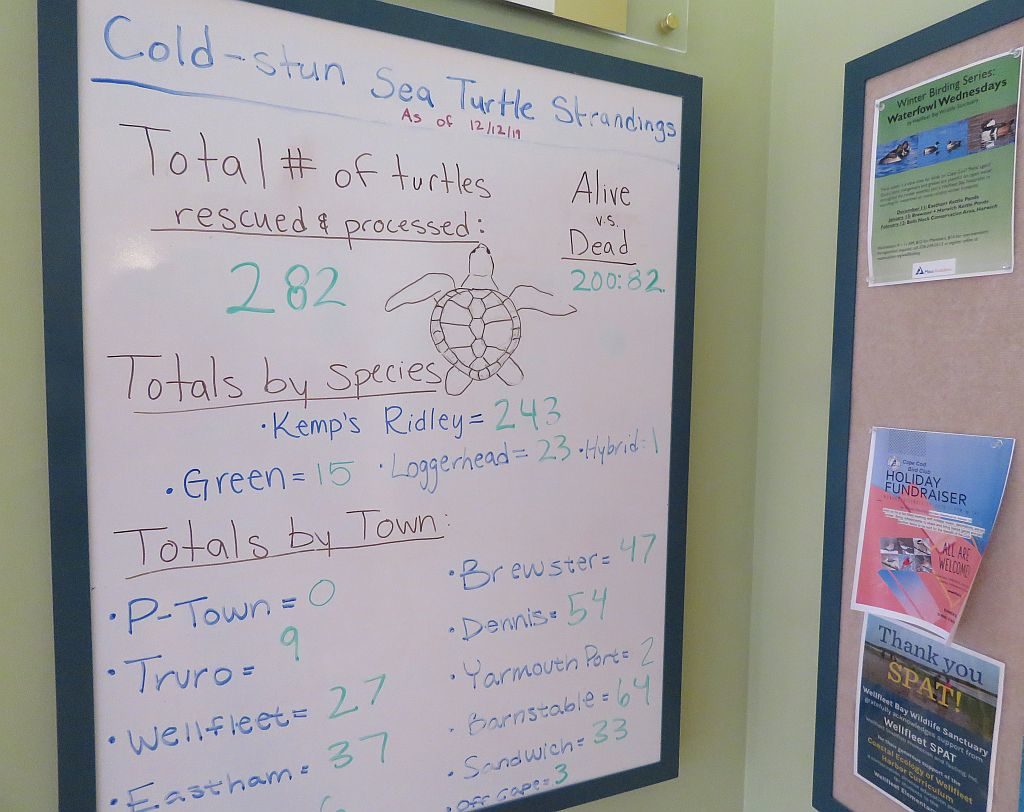
However, since the record cold-stun season in 2014 when over 1200 turtles stranded, sea turtle researchers from around the world have had a special opportunity. Juvenile Kemp’s ridleys, the majority of the turtles that strand on the Cape in the fall, aren’t typically seen in large numbers, and the chance to examine the turtles that don’t survive does not occur anywhere else in the world.
Among the researchers the sanctuary assisted recently was a team from Auburn University who set up shop in our wet lab for a week to look for blood flukes in Kemp’s ridley carcasses. Blood flukes are parasitic trematodes or flatworms known to cause disease in some sea turtle species.
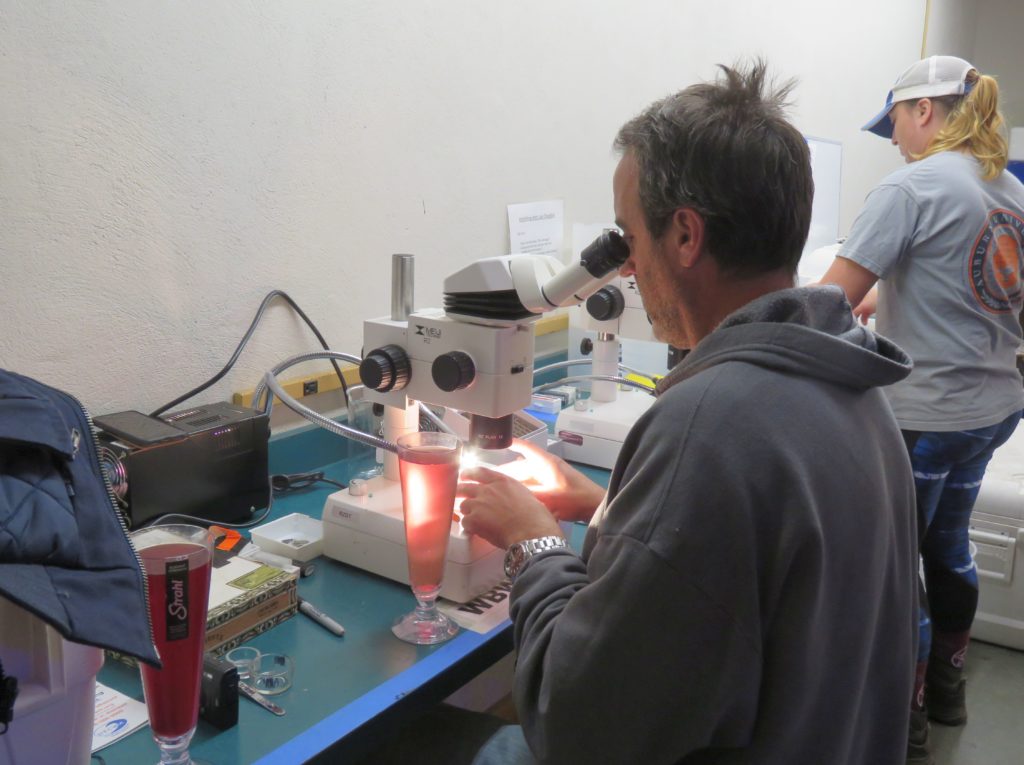
The sanctuary’s sea turtle staff regularly collects tissue and other samples for scientists elsewhere throughout the cold-stun season. The post-season necropsies at Woods Hole Oceanographic Institution, however, provide an unparalleled opportunity for a number of outside researchers to collect samples for a number of permitted, innovative sea turtle research projects. Most winters, we schedule about a half dozen necropsy sessions. This year, we’re planning only two.
Wellfleet Bay staff and their outside research colleagues are dedicated to making the most of every dead turtle. This dedication, coupled with the relative scarcity of carcasses this year, means that some scientists have been attending our high school turtle necropsies to collect samples, which has allowed students to observe professional researchers at work.
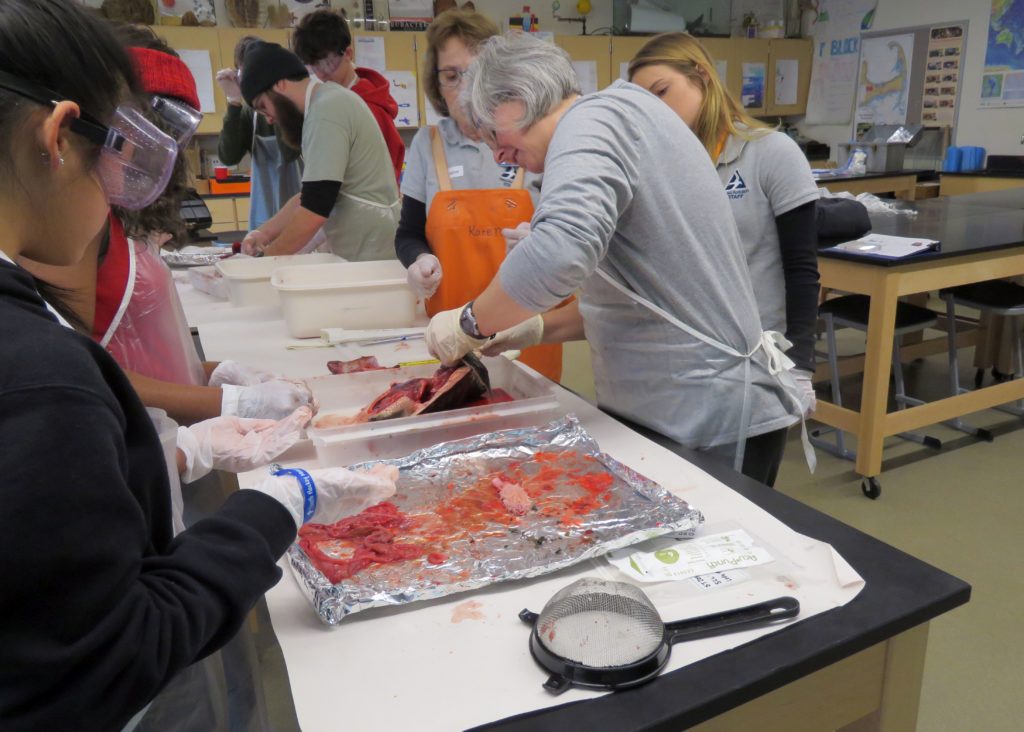
Dr. Heather Haas, of the National Oceanic and Atmospheric Administration’s Northeast Fisheries Science Center in Woods Hole, joined a sanctuary staff sea turtle necropsy session at Monomoy High School to collect bone and soft tissue samples for a new study which, it’s hoped, will lead to a non-invasive way to sex and age live sea turtles. Dr. Samir Patel, of Coonamessett Farm Foundation, joined sanctuary staff and Nauset High School students to take swabs for determining the bacterial microbiome of ridleys.
“The cold-stun sea turtle phenomenon isn’t only a great story about people coming to the rescue of turtles,” says Sea Turtle Stranding Coordinator Karen Dourdeville. “It’s also allowed Wellfleet Bay to facilitate important conservation research and to interact with scientists around the world. This year, some local high school students have been able to watch this science in person as they participated in necropsies in their biology classes.
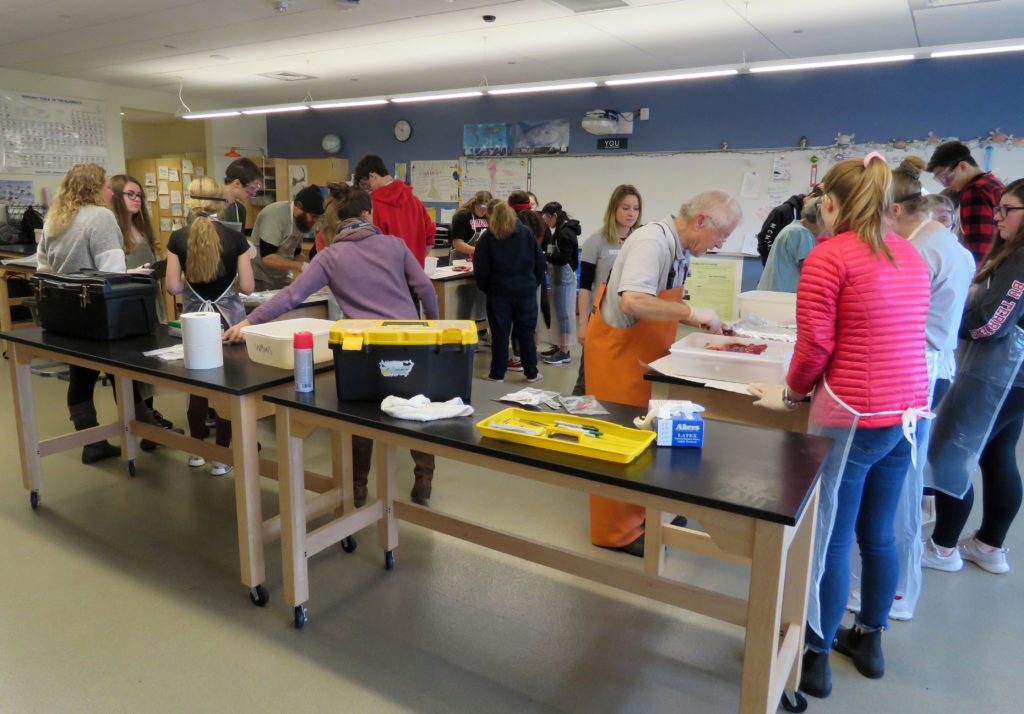
Thanks to Wellfleet Bay Sea Turtle Stranding Coordinator Karen Dourdeville for contributing to this post.


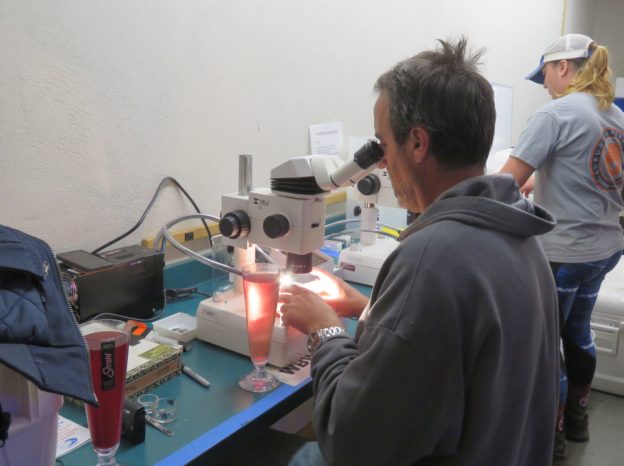
I am so impressed with this outreach program to connect high school students with scientists doing research. I believe some students will be inspired from this experience and it will effect their future choices and studies. So hopeful!
I am so impressed with this outreach program to connect high school students with scientists doing research. I believe some students will be inspired from this experience and it will effect their future choices and studies. So hopeful!